featuring our newest innovative adventure – Highland Wilderness Glamping
Have you ever been trekking in Peru? Hiking in the Himalaya? Walking in France?
What about wild camping?
We have been hut-to-hut trekking and we have been wild camping. The joy of hut-to-hutting, especially in many parts of Europe, is that you really don’t have to carry much gear, but you get to stay in some of the most amazing situations; in huts high in the wild mountains. In Scotland, you can really only enjoy such a wild experience, well away from the road or camping high in the hills, if you carry all your gear with you. And if you’re also taking the family this means that at least one of you ends up carrying a truly heavy pack. You’ll have all your gear and half the kids’ gear as well along with a tiny tent and cooking gear.

Family Adventure Holidays in the Cairngorms
Having experienced both extremes, we’re happy to say that we hit on a solution to bring light weight/small pack camping to Scotland. The solution was right under our noses: camping + ponies! Why not? In many countries abroad mules and donkeys are used to carry camp equipment high into the mountain ranges. Then hikers can access really remote trails comfortably.
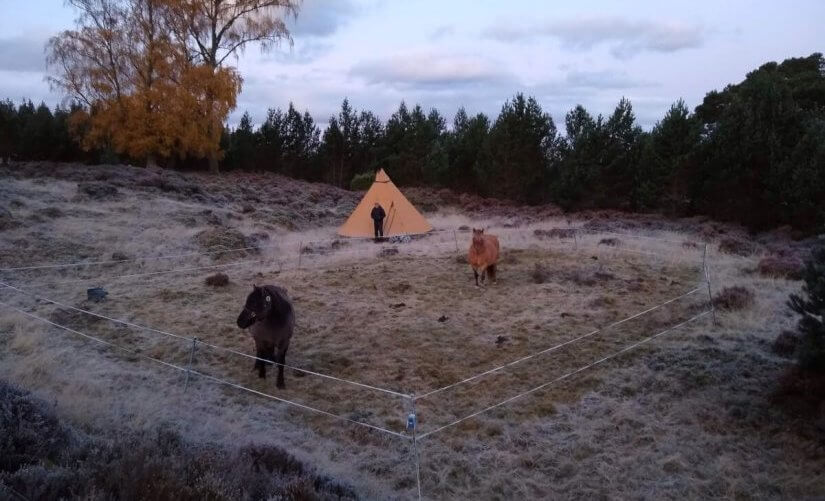
Highland ponies have been bred to carry loads. They are traditionally used to carry deer down from the hill. Many Highland estates keep ponies for this reason. It is a skilled job for both ghillie (pony handler) and pony. There are therefore a lot of factors to be considered when working with animals
View this post on Instagram
We asked the local experts and Andy spent a lot of time learning how to look after ponies and gathering the best gear he could find. He also needed to find some quiet routes and a suitable off-the-beaten-track camp site big enough for the tentipi and with grazing for the ponies. It’s hugely complicated to put these trips together, but after years of preparation they’re on the market.
We’ve found a way to remove the deal breakers of wild camping. After all, not everyone wants to carry a heavy pack; not everyone wants to poo in the wild (nor do they know how to do it in a respectful and leave no trace way); not everyone wants to eat freeze dried rations; no one wants to be soaking wet. With the gear Andy has invested in and the ponies to accompany us, we’ve found a way to get rid of all these issues. Join Andy for an unforgettable outdoor adventure with all kinds of unexpected bonuses: foraging, pony friends, hot tenting, dry clothes, dry shoes, fresh air, and COVID safe.

How a Highland pony always beats a quad bike
You can also check out the videos on YouTube featuring Sylvia Ormiston who manages the Queen’s herd of Highland ponies at Balmoral.
First snow of the winter at the end of November, signalled a chance to search for a new Jacobite site locally. Andy had been reading up on local legends and discussing the sites mentioned with local landowners. He was determined to find another Jacobite hideout used by our local hero and Jacobite legend, John Roy Stuart.
John Roy Stuart was a leader and advisor in the Jacobite army of 1745. He was very close to Bonnie Prince Charlie. If you visit Culloden Battlefield, you’ll find several mentions of him both in the visitor centre and out on the battlefield itself. There is a small memorial to him on the back road to Coylumbridge but it is easily overlooked.
After reading “In the Shadow of Cairngorm” by William Forsyth and speaking to Lynn of Lynbreck Croft, we were all set to explore on the edges of the croft.
We tempted out a friend and the rest of the family with a promise of a visit to the Christmas Cairngorm Farmers market in Grantown, followed by a short walk. We duly filled up on delicious local produce then headed out to find:
” In a wild, lone gorge at the foot of the cliff, shaded by birches and hazel, there still lies a smooth slab, under which he used to shelter. There, wrapped in his plaid, with his broad-sword by his side, he would lie, with the bracken for his bed and the music of the brook for his lullaby.”
Did we succeed?
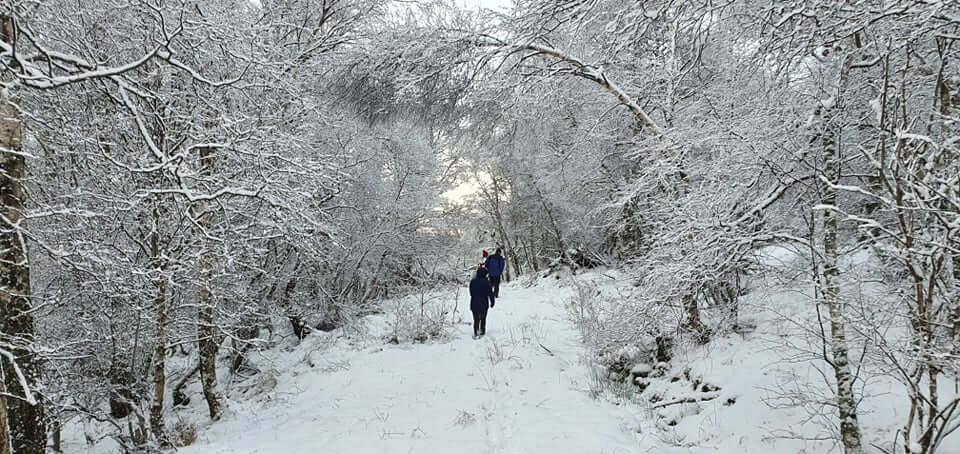
Heading down to find the slab which might have been a hideout.
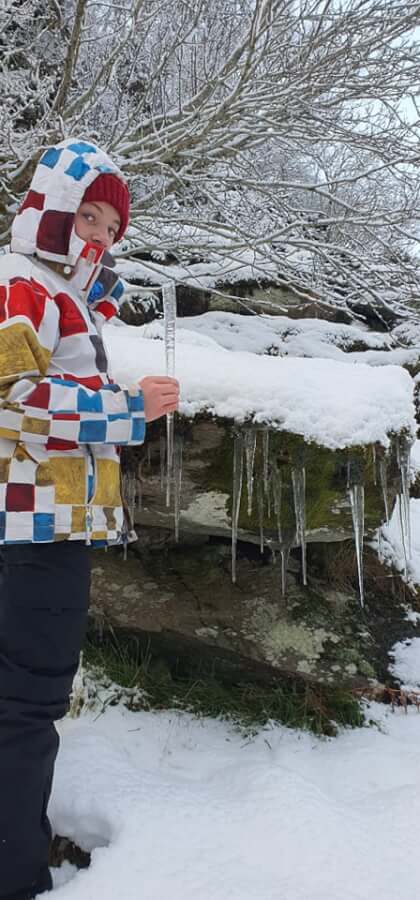
Maybe? Or Maybe not? Is this the hideout?
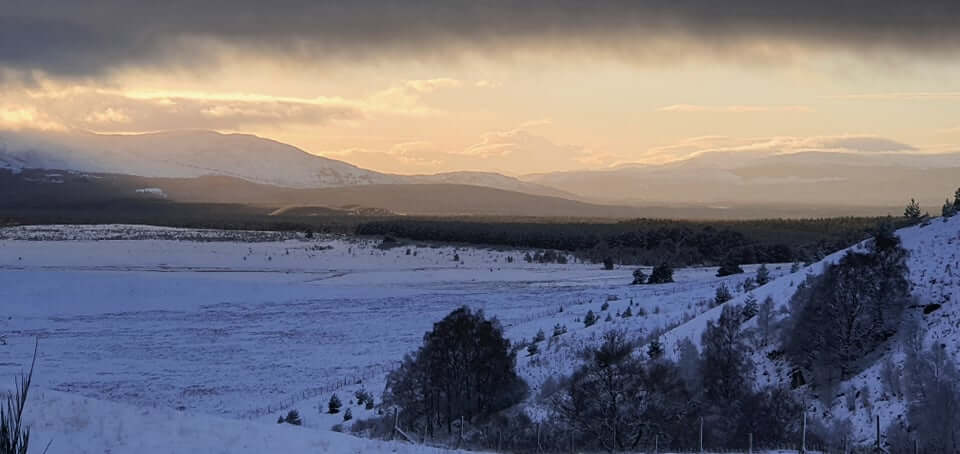
At least we had a lovely sunset to enjoy
Slow travel is all about forming a connection with a place in Scotland and making personal memories. It’s not about making agendas or constantly checking your social media. It’s more about switching off, chilling out and immersing yourself with your surroundings and the locals there to welcome you. Of course, the ultimate in slow travel is to travel on foot by hiking/tramping/trekking to your destination.
The essence of Scot Mountain Holidays has always been about slow travel, so we could be considered experts to a greater or lesser degree. We’ve always encouraged our guests to dwell a little longer in one spot: to take time to smell the daisies as it were. This is one of the reason most of our trips are based from one centre and walks head out from there, like a star.
Here are the top 3 benefits you can receive from slow travel and how you can try it for yourself.
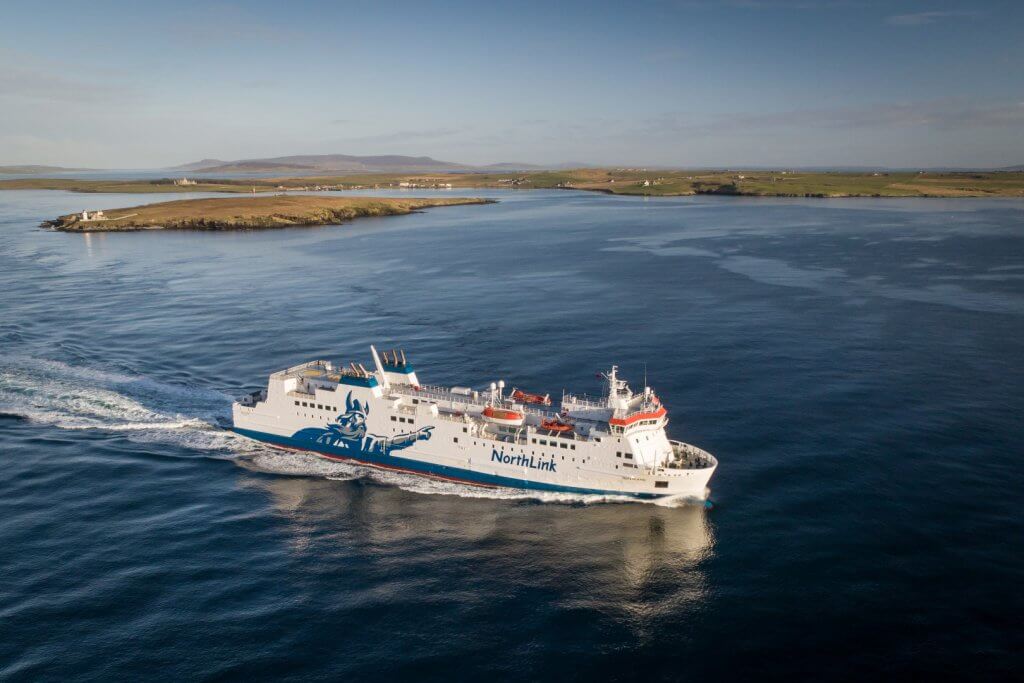
Getting from one destination to another shouldn’t be fast-paced. It should be about sitting back in your seat and soaking up Scotland’s picturesque landscapes and scenery. Not only is booking a bus, ferry or train an easy way to travel across the country, but it’s also sustainable and cheaper!
We encourage all our visitors on guided walking holidays (or just using our accommodation at Fraoch Lodge) to travel by public transport. We do still offer an airport pick up from Inverness but we limit this to one per trip and we are hoping that once the train station is operational we will be able to stop offering airport pick up completely. After all it is already possible to reach us by travelling completely on public transport from the Netherlands!
Food is a very important part of life for many people including us. We take the food part of our trips very seriously (you should see the number of cookbooks Rebecca has, many from local Scottish chefs). We love trying new and traditional Scottish products and recipes. Due to the pandemic we have been limiting our visits to the local restaurants but we’ll be back soon.
Haggis, fish and chips, seafood, porridge, cranachan: these are just some of the many different types of Scottish food and drink you can sample when exploring Scotland. Whether it’s in a cosy little pub down by the harbour or in a seafood shack by the shore, there are many local businesses you can stop by to get a bite to eat using locally sourced ingredients. See how familiar you are with our Scottish specialities
Top book to invest in if you’re interested in what’s best for Highland Produce:
Even though we’re not personally mentioned,we know and use a lot of the produce mentioned in the book which makes it extra special for us.
Take the chance to reconnect with nature, and you and your loved ones can enjoy together. There is no shortage of great places to stay in Scotland for you to relax. These include eco-friendly lodges, cabins and treehouses.
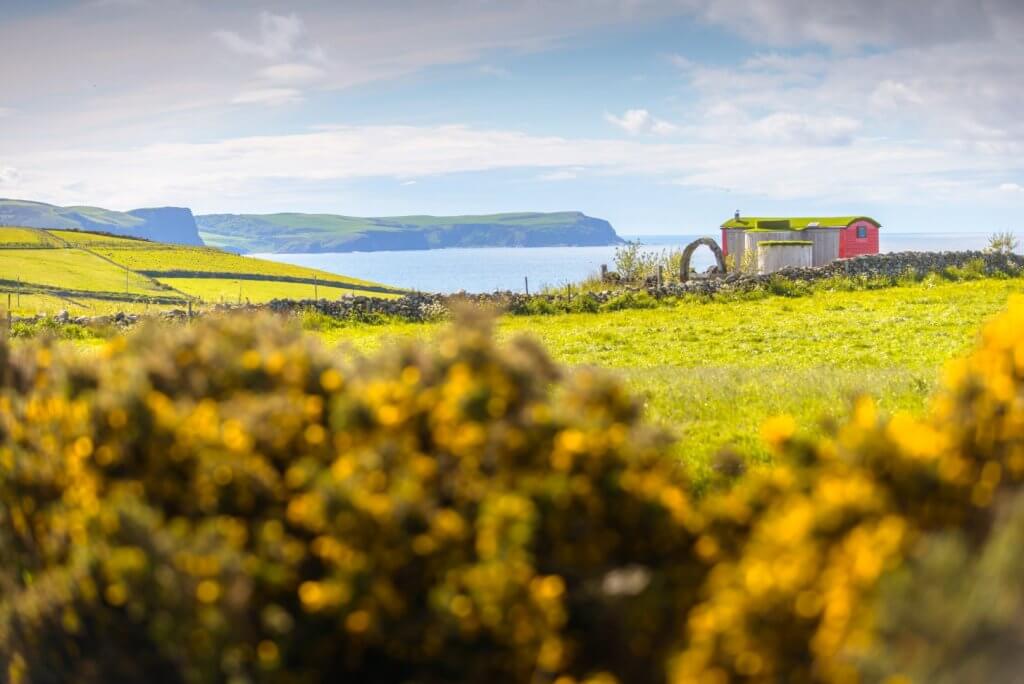
Down on the Farm provides a unique accommodation experience for anyone looking for the perfect getaway situated in a working farm. The location of the ‘Coastal Carriage” features stunning views across the sea and animals dotted about on the landscape.
Suppose you’re looking for something more adventurous. In that case, we offer a Highland Wilderness Glamping Taster: a guided three days and two nights hiking holiday combining pony trekking with luxurious glamping, including Nordic tipis, warm showers, and comfortable beds.
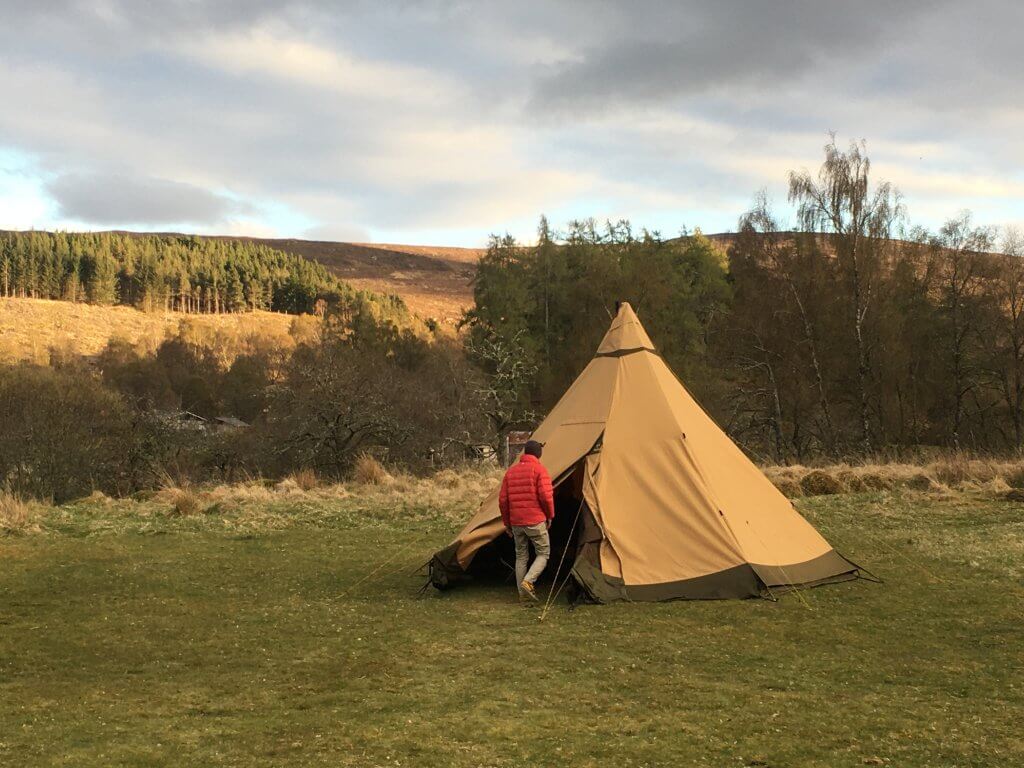
Heading into the dining room in Strathfarrar
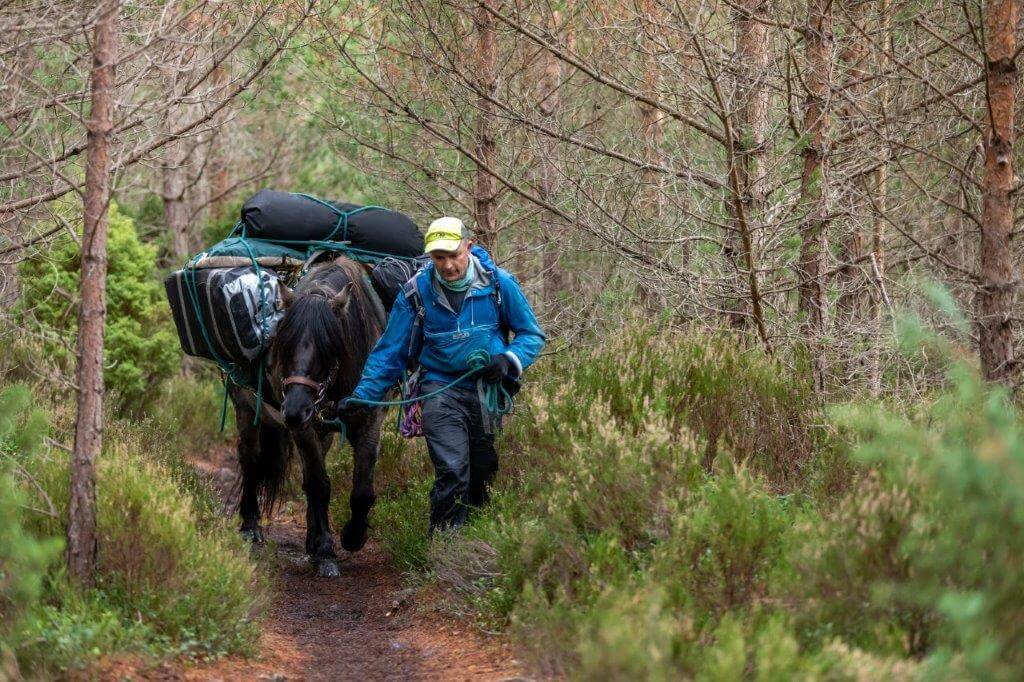
Caption: Ultimate slow travel option – there’s something so good about walking with ponies. Does wonders for your mental health and the ability to disconnect with the hurly-burly of everyday life.
Post in association with Kirsty Anderson at VisitScotland
2021 reviewed – We’ve included some images of our personal explorations this year as we were not able to share our winter with you.
It’s always interesting to look back at the photos you’ve taken during the year. Obviously, we tend to take photos when the weather is better so looking back over them, we get the impression that there have been loads of sunny days.
We did have an exceptional summer this year: we all went for a swim in the river Spey – which has never happened before! Unfortunately there’s no photographic evidence of this. However, check out the pictures from our Cairngorm 4000er trip in July; in contrast to the weather we started off with in Strathfarrar. Thank goodness for hot tenting in the tentipi which allowed us to have a relatively social but warm and socially distanced dinner together.
Thanks to those who have already shared images with us (some of which you might recognise below) particularly Peter Johns, Mayank Balsara, Looi Oon, Rhona Grant and Cassie Ronaldson.
Happy memories!
If you have any other images you’d like to share with us we always welcome additions to our library!
Also if you haven’t been able to review your trip yet – Facebook and Google are the best platforms at the moment.
For full versions of the images click through to our google album where you can also download images if you wish. Please let us know if you’d like to download any particular images for your personal use.
If you’d like to see the full galleries from the following trips please email us for the link:
Remote Munros: Strathfarrar
Magical Mull
Cairngorm 4000ers
Complete Cairngorms
Glens, Forests and Lochs
Western Isles Wilderness
Classic Torridon
Autumn Munros
“Wellness is the act of practicing healthy habits on a daily basis to attain better physical and mental health outcomes, so that instead of just surviving, you’re thriving. To understand the significance of wellness, it’s important to understand how it’s linked to health”
The whole concept of wellness was never something I really thought to define before the COVID-19 pandemic created a new focus on mental wellbeing. We’ve never really sat down and put into words the “wellness” aspects of our trips, but people do keep coming back so we must be doing something right.
Spending time in green space or bringing nature into your everyday life can benefit both your mental and physical wellbeing. For example, doing things like growing food or flowers, exercising outdoors or being around animals can have lots of positive effects. It can:
‘We’re outdoor creatures,’ says Dominic Higgins, the first ever nature and wellbeing manager at The Wildlife Trusts. ‘We’re built to be outside,’ he explains. ‘All the evidence shows that too much time spent away from green space can lead to chronic stress and other issues.’
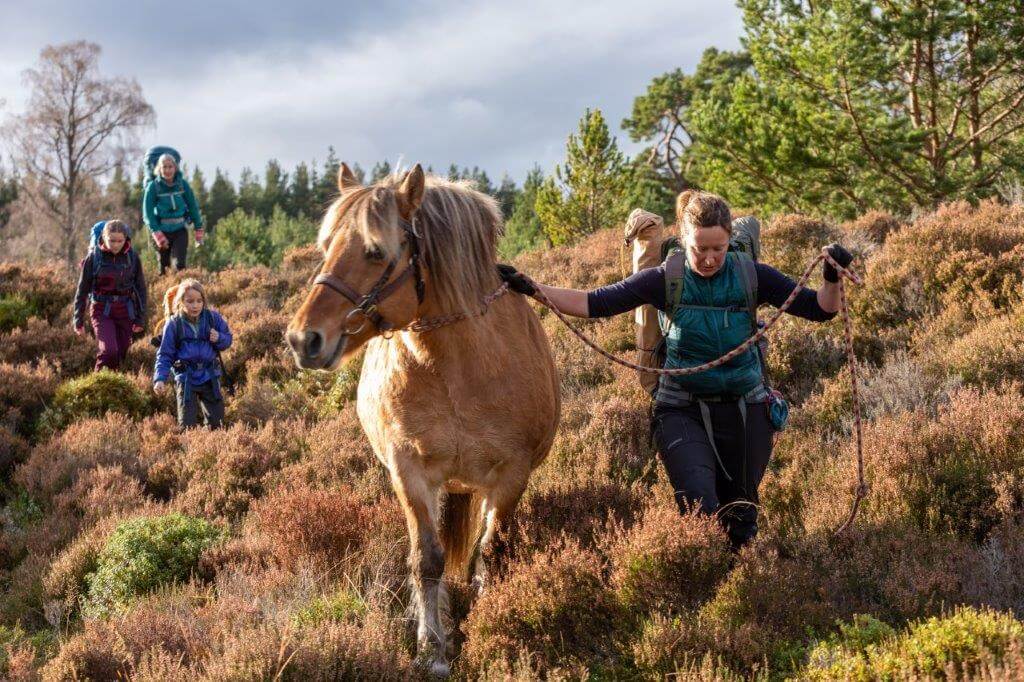
Photo by: Andrew Weild
Most of us have experienced the sense of calm that comes with time spent in the countryside. The fresh air and distractions of nature soothe the mind, and anxieties can be forgotten, however temporarily.
It’s no surprise then that a growing number of health professionals, community workers, naturalists and academics are advocating the use of ‘green therapy’ – time spent immersed in nature – to help those living with mental health difficulties. For example, in Shetland the GPs can prescribe nature for their patients.
‘Nature is therapy,’ Claire Hector, Green Army says. ‘It frustrates me that modern life has become about boxing ourselves up, removing ourselves from nature. It’s sensory deprivation, really. I’m hoping that people are beginning to recognise the vital importance of nature and the wild for our brain health.”
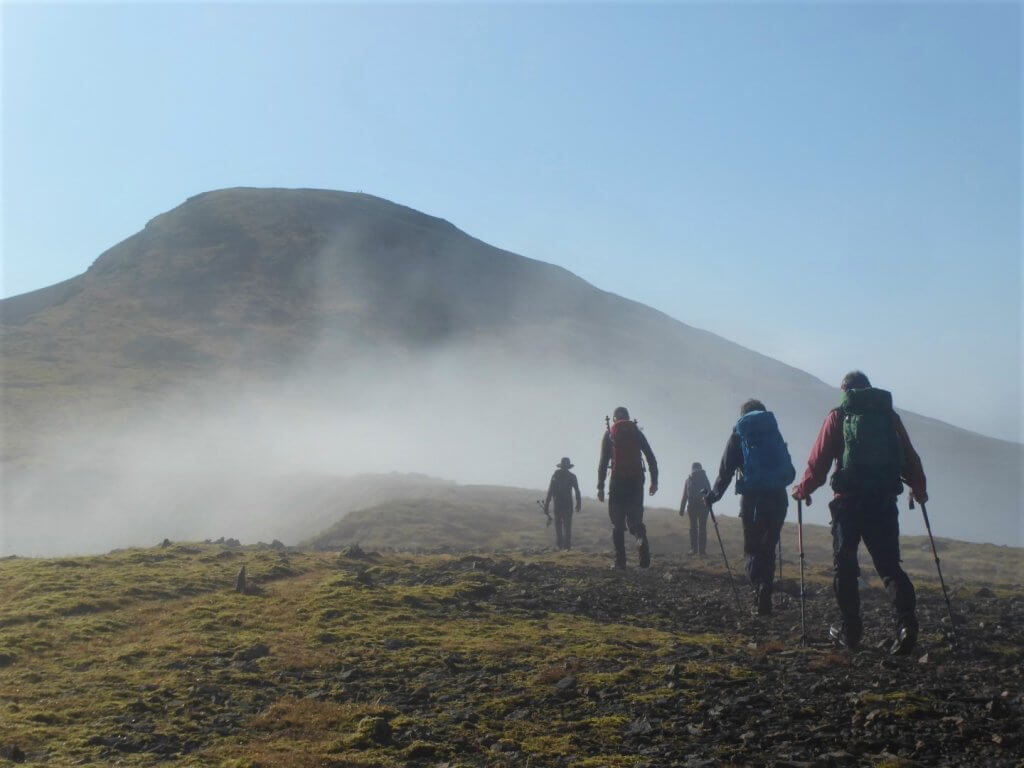
Socially distanced Munro baggers hearing off to the mist
We might not have the right vocabulary to describe our trips and the essence of our business in terms of “wellness”, but this is what we end up providing for our guests – even if many of them wouldn’t put it in these terms either.
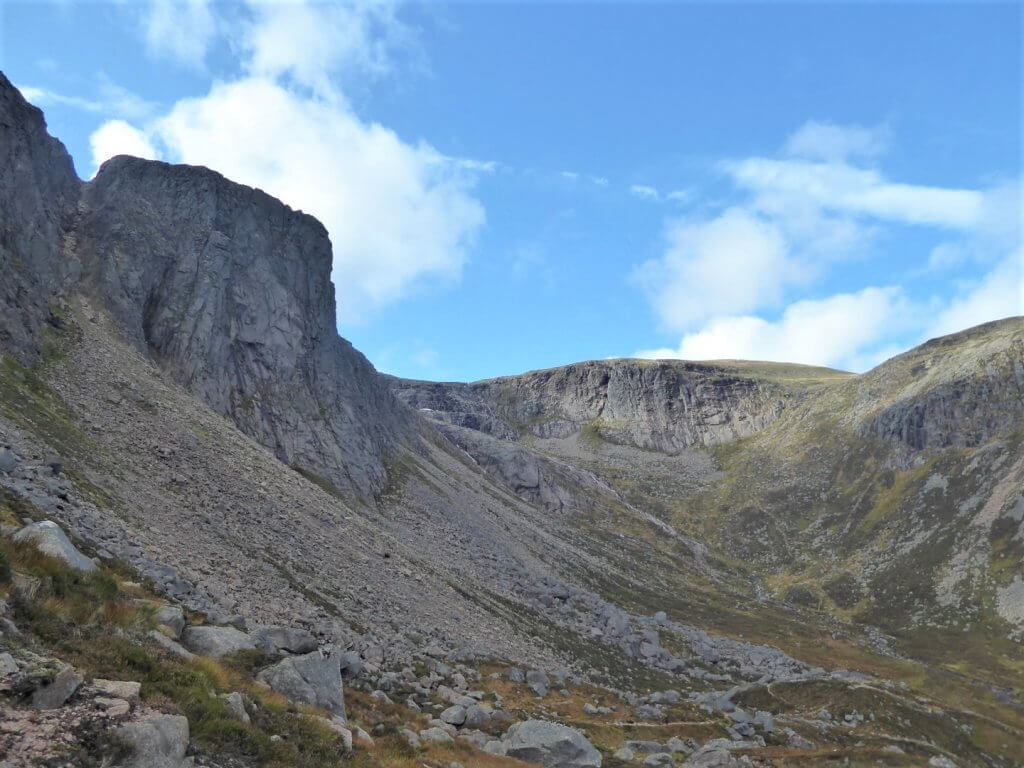
Cliffs of the Cairngorm peaks. Mecca for climbers
So if you’re thinking about taking a break from the city – remember it’s healthy to get outdoors, not just physically but mentally too and though we don’t talk about “wellness” in connection with any of our trips – it’s definitely as part of them. More than a part in fact – it’s central.
With over 900 offshore islands, the Scottish Islands have something to offer everyone. From stunning white sandy beaches, to historic castles and standing stones, watersports to wild-life watching, you won’t be short of something to do. Whilst some islands are mountainous and offer spectacular views, others are low-lying, fertile lands that attract an array of wildlife. Whether you choose to go on a guided tour or have a self-guided adventure, you’re guaranteed an experience you won’t forget. Here are the top 7 Scottish Islands you won’t want to miss.
Once believed to be two separate islands, Harris and Lewis are in fact one landmass. To the north, you’ll find Lewis, with its stunning sparkling white beaches, whilst in the south, Harris offers a more mountainous and rugged landscape.
As well as the beautiful scenery, you’ll also find numerous historical sites, including many churches and castles. One of the most well-known sites are the Callanish Stones. Additionally, the island is also a great destination if you enjoy hiking, with plenty of lochs to explore, as well as offering plenty of opportunities for watersports.
Scot Mountain Holidays is heading back over to Harris and Lewis in September 2021. We’ll be doing a lot of hiking but we’ll also visit the Callanish Stones amongst other famous sites and we’ll get a chance to explore some of the arts, crafts and architecture on our free day.

Heading down to civilisation from the hill tops of Harris
With sparkling beaches and plenty of sunshine, Tiree is often referred to as the ‘Hawaii of the North’. With an abundance of fertile land, Tiree is a scenic and popular destination. As well as its many coves and stunning bays, its position on the Atlantic makes it a prime location for many water sports. It’s particularly popular with windsurfers, as well as surfers and kayakers.
Mingulay was inhabited until the 1930s, when its small population was evacuated to mainland Scotland. However, the houses have remained untouched and it’s possible for visitors to now stand within them.
“Mingulay is an ideal destination if you’re looking for sandy, picturesque beaches or are interested in hiking and exploring the island and its beautiful cliffs. There’s also plenty of wildlife to look out for, including puffins,” says Johnny Craig, a travel writer at 1Day2Write and Britstudent.
Known for its whisky and gin, Jura is a mountainous island, home to a population of only 200 residents. Despite the fast tides, there are many stunning, sheltered beaches to be found on the island. Dominated by the Paps of Jura, its three conical mountains, the island has many fantastic trails to explore, leading you to the very summit of its peaks. The whirlpool at Corryvrecken is one of its most spectacular and memorable sights.
Islay and Jura are high on the list of new destinations Scot Mountain Holidays is planning to add to the itinerary in 2022 or 2023. The wildlife and coastal walking opportunities are phenomenal.
The Shetland archipelago is comprised of almost one hundred islands, of which only sixteen are inhabited, with most of the population living on the ‘Mainland’. The Shetland Islands are the ideal destination for those looking to hike and explore the craggy coasts, stunning beaches and breathtaking sea cliffs. The coastline, with its many coves, is fantastic for sea kayakers.
“Shetland is also a popular destination for wildlife-watchers,” says Monique Corbett, a lifestyle blogger at Originwritings and Write My X. “It attracts a whole array of wildlife, from otters and puffins, to seals and dolphins. You might even be able to spot an orca.”
A new self-guided walking itinerary for Shetland will appear on the Scot Mountain Holidays website by the end of 2021.
Easdale is one of the smallest inhabited islands in Scotland and can be walked around in its entirety in under half an hour. Made of slate, for which it has been quarried over many generations, Easdale now has several quarry pools which exist in its interior. With a friendly and vibrant community, this island is a great destination for those looking to relax and see some wildlife, or visit neighboring islands.
Possibly one of Scotland’s most well-known islands, the Isle of Skye is filled with breathtaking and majestic scenery at every turn. Often shrouded in mist, its dramatic peaks and rock formations often appear almost mystical. The Cuillin mountain range is a popular destination for hikers, along with the Old Man of Storr and Quiraing peaks. History fans can also explore the Armadale and Dunvegan castles, whilst the Fairy Pools are perhaps one of the most popular tourist spots.
Scot Mountain Holidays visit Skye on several of our itineraries: Skye Munros, Superlative Skye and Skye and the Cairngorms National park. Remember the main focus is being outdoors and exploring the scenery so we minimise the amount of time spent inside a vehicle. There are no Skye trips planned until 2022 due to a lack of accommodation.
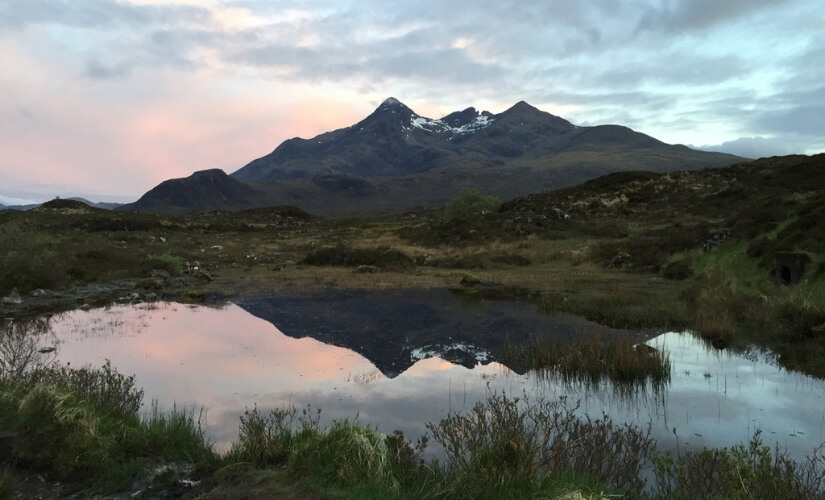
Whether you’re looking for a hiking adventure, stunning locations for watersports and coves to explore, or simply wishing to observe the beautiful scenery and wildlife, the Scottish Islands have it all. The only question left is which one will you choose for your next adventure?
Kendra Beckley is a successful business development manager and editor at Academicbrits.com and Phdkingdom.com. She specializes in supporting companies as they seek to enter new business markets and is especially successful at building long-term relationships with partners. Kendra also enjoys writing articles on a variety of topics for Nextcoursework.com. A passionate traveler and hiker herself, Kendra can often be found exploring new trails in her spare time.
Exploring the unparalleled beauty of the Cairngorms National Park is a treat for all. But there’s another sort of treat you should always consider when planning any wilderness walk or expedition – meals and snacks to set you up well and keep you going all day. What to eat for hiking and when to eat it is crucial to the enjoyment of your day out. There is nothing worse than a member of your party becoming disheartened by not having enough to eat.
We’ve all been there – partway through a walk and feeling tired and irritable, just not enjoying it as much as you should. That’s more than likely because you’re hungry – or “hangry”. Choosing the right food to eat before and during your trip can avoid this issue entirely and set you up for a fabulous day’s walking.
You don’t need to follow a specific diet, but there are some nutritional tips that can definitely make a difference.
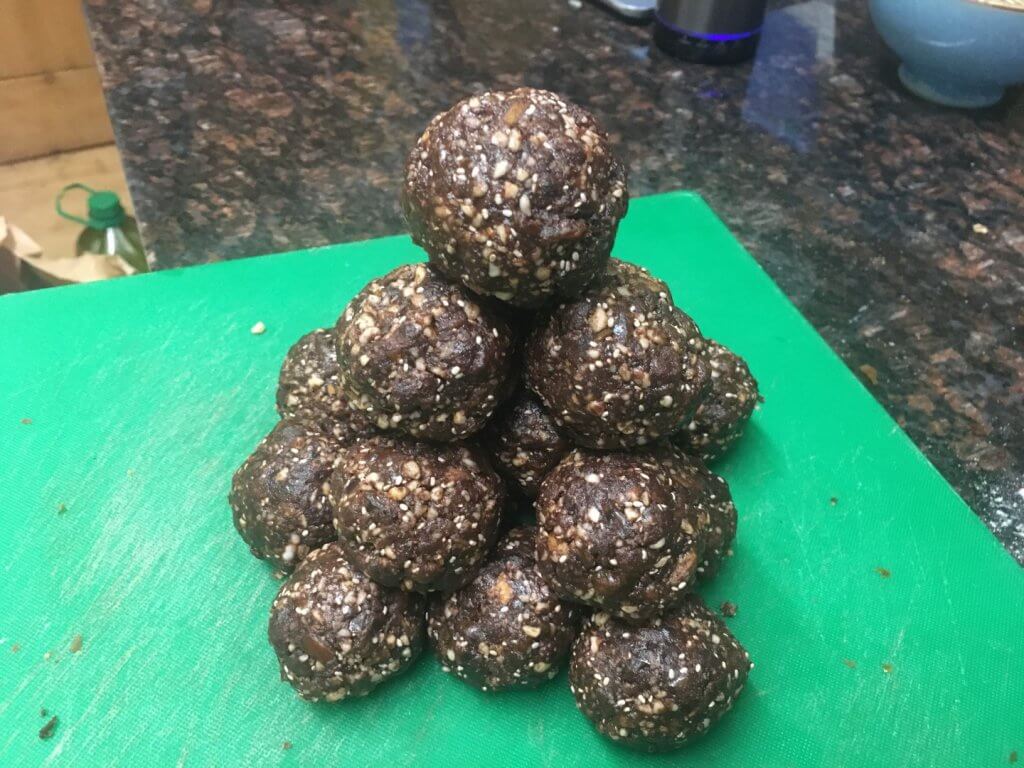
No more hangry outbursts, just a fully-fuelled, bursting-with-energy day out – all it takes is a peanut-butter-and-banana-on-wholemeal sandwich!
NB After your hike, just as with a strenuous workout, you do want plenty of protein in your meal to aid muscle recovery.
Coming to Scotland with teenagers? You might have some concerns. Travelling with teenagers can be challenging. You’re trying keep them happy and entertained and off their screens for at least part of the day. Scotland’s largest national park is definitely a “must” for you and your teenagers, especially in these post COVID times.
The Cairngorms offers a wonderful range of activities to tempt even the most cynical teen away from their screen. There’s so much for them (and you) to enjoy in the wonders of the natural world.
There are a few general tips that will help engage your teens in your holiday to make the most of the beautiful Cairngorms
The Cairngorms offers a huge choice of activities and adventures for both you and your teenagers to enjoy – here are just a few highlights to start you off
From gentle hill walks to ascending the highest peaks, the Cairngorms are a natural adventure playground whatever your level of fitness – we’ve chosen some of our favourite family walks here. Or why not push deeper into the wilderness without sacrificing your home comforts on a glamping adventure, supported by your own Highland pack pony.
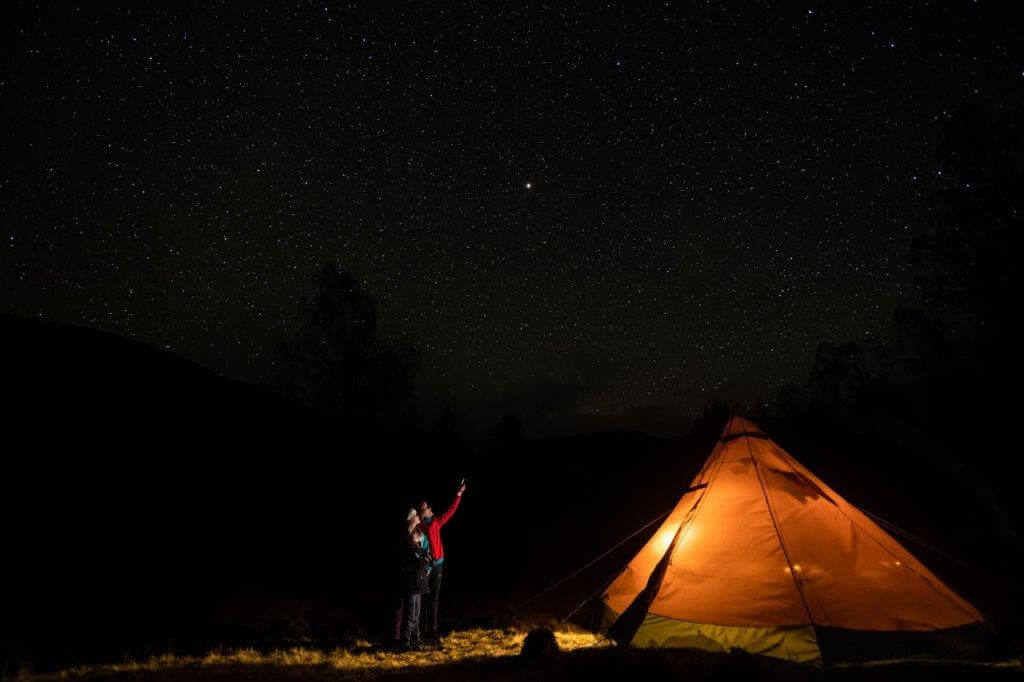
There are also a multitude of climbing options from small roadside crags and Treezone type adventures or Zipwire adventure park to multi-pitch mountain routes in the Cairngorm massif.
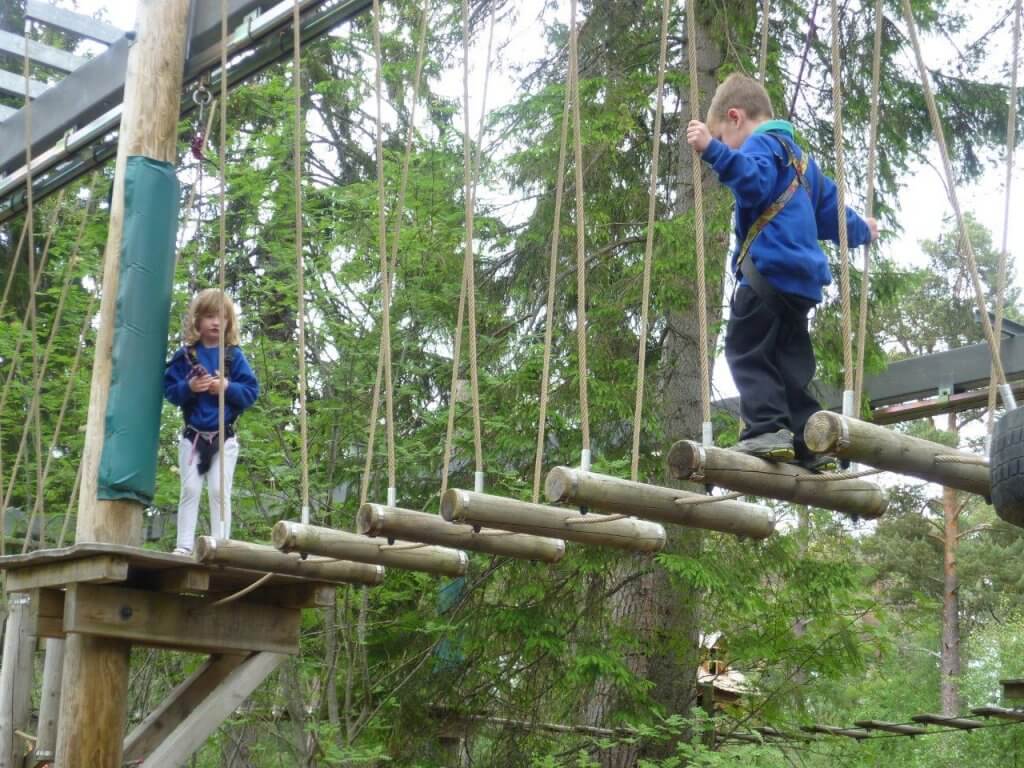
Enjoying the high rope course at Landmark, Carrbridge. There’s something for all the kids and it’s so easy to get there from Fraoch Lodge.
Teenagers may claim to be “over” wildlife parks and zoos, but just watch their faces as they see tigers prowling the woodland and polar bears padding across the hillside. Add wolves, red pandas and snow leopards into the mix and even the most cynical teenager will rediscover their sense of wonder at the natural world. With a combination of in-car safari and on-foot animal trails, the Highland Wildlife Park is a fabulous day out for the whole family.
For variety and exhilaration, Rothiemuchus is hard to beat. The estate has a wee bit of everything. You can go fishing or use their bespoke hides to take spectacular wildlife shots. Or for adrenaline junkies try the quad bikes, river rafting or gorge walking. There’s something to satisfy even the most demanding teen. Combining the great outdoors with great activities is the perfect way to enjoy time outside as a family.
With both Loch Morlich and Loch Insh within 30 minutes drive of Fraoch Lodge, even if you don’t have your own gear, there are plenty of chances to try a bit of kayaking, sailing or SUP (Stand Up Paddleboarding).
The northern Cairngorms are also surprisingly close to the beach, particularly if you include Loch Morlich beach. You can also visit the sea and go dolphin spotting within an hour’s drive.
Trail centres and natural trails abound here. You can find almost any kind of biking: cycle round lochs, up mountains and improve your skills on all grades of route. You can ride for minutes or for hours. Check out the options at Glenlivet Bike trails and Laggan Wolftrax. With the explosion in e-bikes, you can access almost any route including the more famous long distance high level routes like the Burma Road
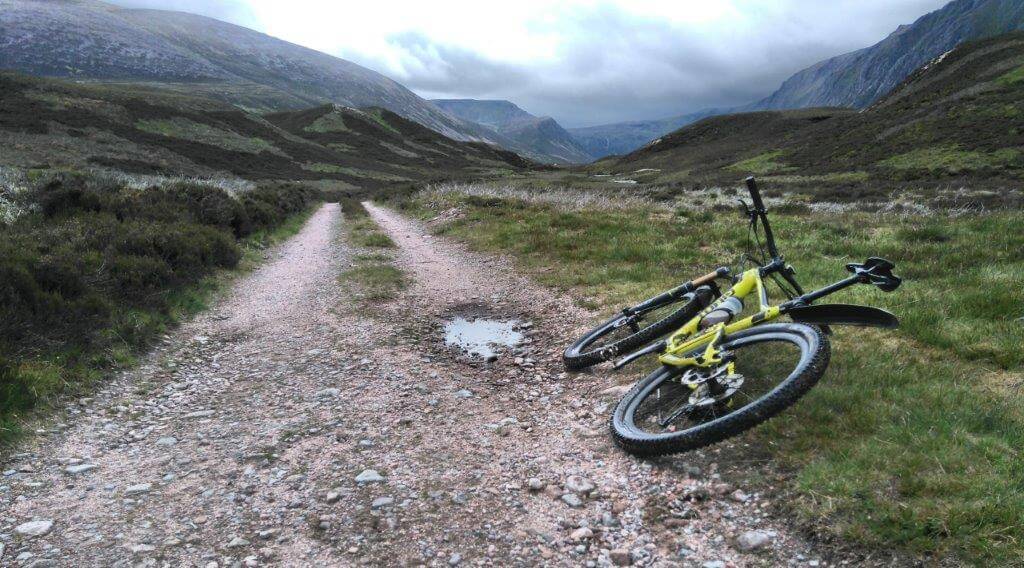
Enjoy the wild parts of the UK out on your bike
Every day in the Cairngorms can be an adventure. You can just enjoy the wilderness or enjoy the views. Or go and discover the wildlife or ride a Segway; there’s such a wide variety of activities, sights, and pursuits. With a little preparation, some energy, agreed time off screens and an extensive selection of snacks, we are confident that there’s no better place for you and your teenagers to enjoy together.
There’s a ton of stuff we haven’t mentioned: the Highland Folk Museum, Leault Farm sheepdog demonstrations, Ballindalloch Castle, and more: check out our family adventure for more choices.
If there is really too much to choose from, do give us a call and we’ll put a plan together for you to fit in as much as possible.
Post COVID travel is not going to look the same as in 2019. There’s no getting away from it: this pandemic has brought about massive lifestyle changes, some of which could be around for some time to come.
Though there has been a massive vaccination programme, through which most if not all the main “at risk” groups will have been covered by mid April, there will still be an element of risk for us all when we exit our lockdown bubbles. We’re all getting just a tad fed up of seeing the same 4 walls now; but caution will still be the name of the game, even when we’re given the go ahead to go a bit further afield. So it’s worth remembering that there will still be a few restrictions in place, even for guided walking holidays and trips in the outdoors.
For at least the initial stages of coming out of lockdown (Spring 2021) social distancing rules are likely to remain. It’s not completely clear at time of writing exactly what these will look like when it comes to the hospitality industry or guided group exercise but outdoor group classes have already started again (March 2021) as have club social bike rides, so it looks promising for Scot Mountain Holidays activities. However, we would recommend that all guests make sure that they bring face coverings for any occasions where it may be necessary for us to temporarily be in closer proximity. We’d also recommend carrying a small bottle of hand sanitizer in your pack to cover any possible emergencies. We will have extra hand sanitizer available and a dispenser is installed in the van.
When we stop for breaks, try to make sure you maintain distance between yourself and other members of the group and don’t share food around.
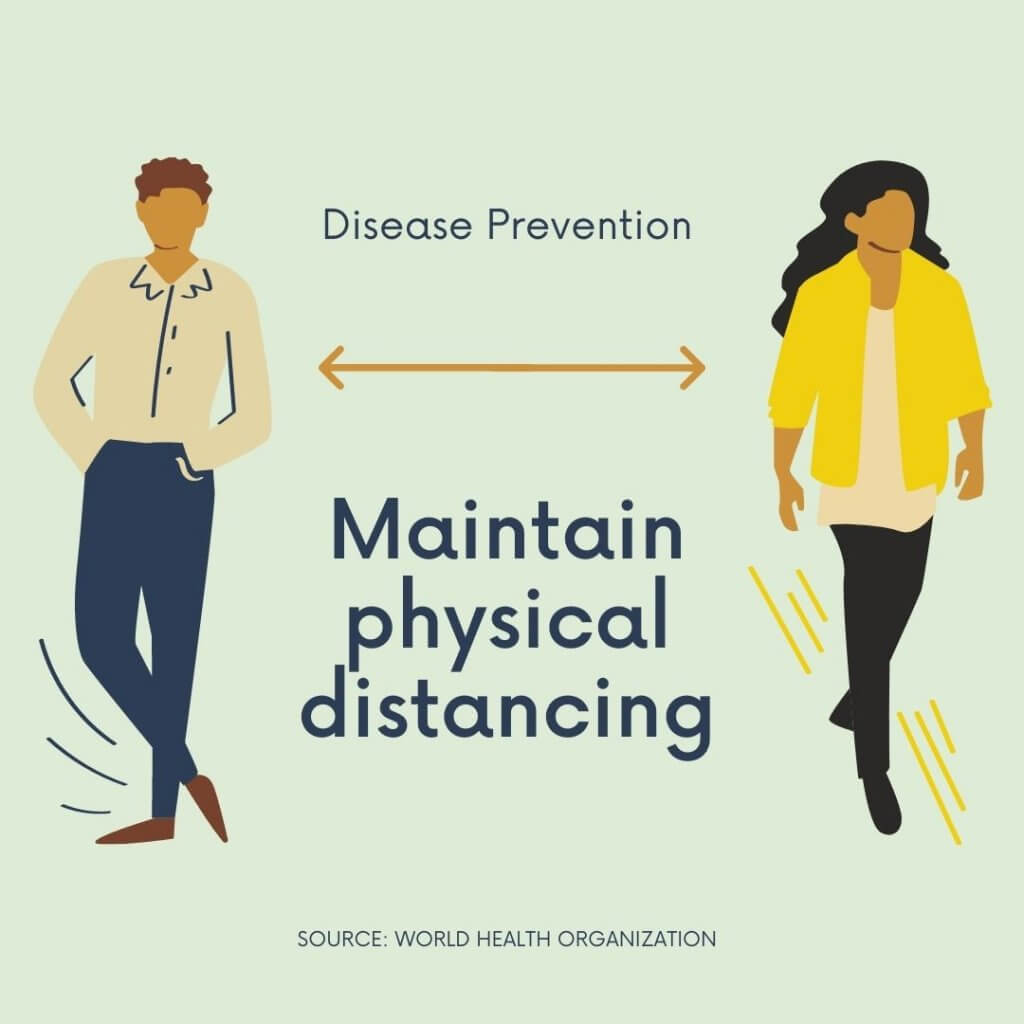
We’ve had to use face coverings for a year or so now. They’re almost a part of daily life when you leave the house. Signs encouraging face coverings are everywhere.
We don’t expect face coverings to be worn while hiking. Social distancing is more than enough while out – and comes naturally as we all have our own pace. However, they will remain necessary while we’re in transit. In other words both in the bus and while moving around our home base face coverings will remain necessary for the foreseeable future.
Something we’ve all become accustomed to over the past year – frequent hand washing and sanitiser supplied everywhere. We recommend carrying a small container of sanitiser on the walks. You may be unable to avoid touching or close contact on occasion. Personally I recommend moisturiser too. All this soap and sanitiser takes out your natural skin oils and leaves your hands dry and itchy.

This is such an important one at the moment. Each of the 4 home nations having taken slightly different routes into and out of lockdown. Therefore it is so important to stay up-to-date with the post Covid travel rules. For example, no date has yet been confirmed (29.03.21) for the resumption of travel between Scotland and England. All we have been offered is a date (26.04.21) for travel across Scotland. We’ll just have to keep our eyes open after Easter and see what changes (if any) are made to the restrictions. Of course, we now have the Scottish Election complicating the post-Covid plans and government is currently in recess pending the election results at the beginning of May.
We’ve taken care of this one for you. None of the places we’ll be taking you will be overrun with visitors. It’s rare to spot other walkers, even in the distance, on many of Andy’s routes. When we say we’ll take you off the beaten track, we really mean it.
And of course, don’t forget once you do make it up here – we all have to be responsible when we go out to enjoy nature.
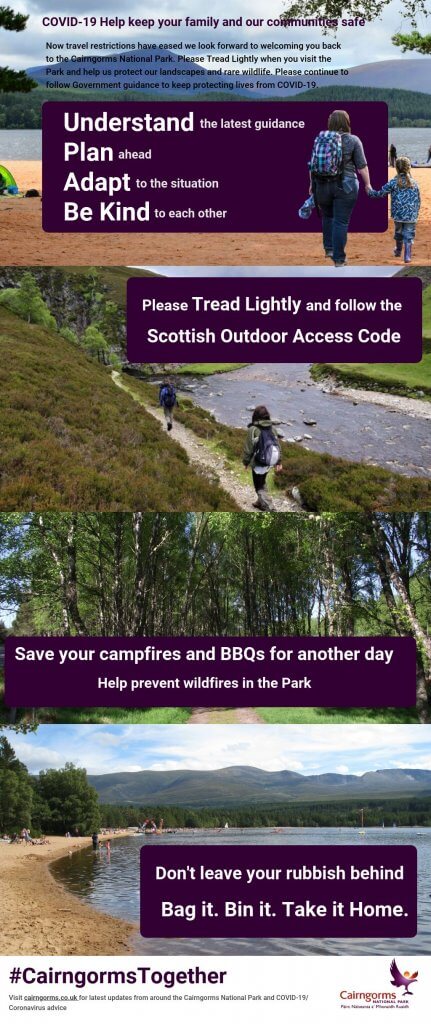
What will travel look like in a post COVID world?
Travel trends after coronavirus
How Scotland and England plan to resume travel, camping etc
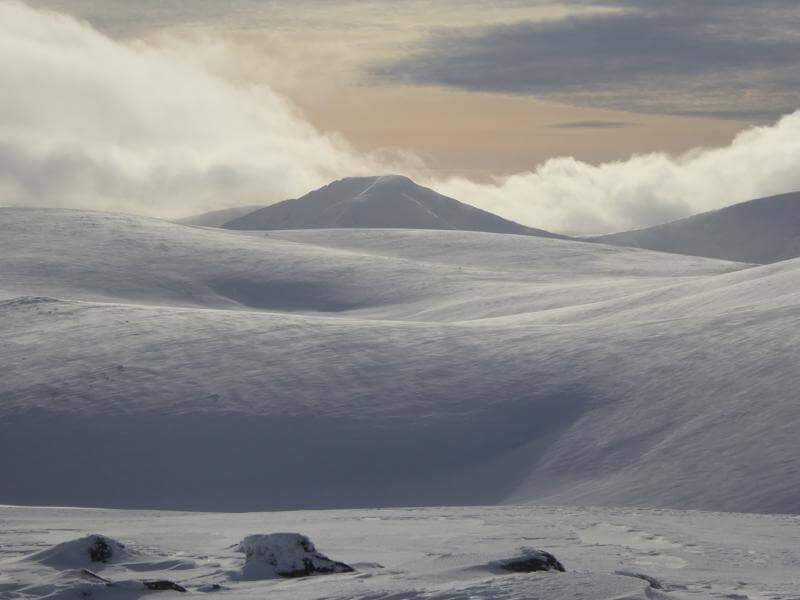
Photo Andrew Bateman, Spot Lochan Buidhe! Looking across the Cairngorm-Ben Macdui plateau towards Cairn Toul.
Come the winter months, one might be forgiven for thinking that lochs, lochans, tarns, lakes, etc would at least indicate their presence by a flat surface. Some do but don’t bank on it! High in the Cairngorms there are 3 lochs, all within 3 km of each other and all behave differently in winter.
Starting with the highest, Lochan Buidhe. It is perched on a broad shallow saddle at 1125m on the Cairngorm – Ben Macdui plateau close to where the Curran Hut once sat. Its high elevation and shallow nature mean it can pretty much freeze solid! Its bed is of raised granite blocks set in gravel. The blocks support the ice whilst allowing the ground water to drain out and so it can support no end of drifted snow thereby losing its dead flat surface.
At around 920m we have the pools on the floor of Coire an t-Sneachda. Again these are fed by ground water and drain out through the blocks and moraine to the north. Their water levels can vary considerably over time depending on the recent rain/melt. Frequently they will freeze over and then the water drains out from underneath the ice. The remaining ice sags under its own weight and the boulders punch through, again losing the flat surface. Any evidence of the pool can then be obscured by further snowfall.
Loch A’an – winter navigation & water features
Loch A’an (Avon) on the other hand self-levels since it’s much deeper. Remember water’s density is greatest at 4 Deg C so the warmest part of a loch is the bottom. Any snow drift on top of the surface ice will push it down into contact with slightly warmer water and melt it. The buoyancy is lost and over time the drift simply levels with the rest of the surface ice thereby maintaining a flat surface.
These tips and plenty more insights are covered on our 2 day winter navigation course
All content © Copyright Scot Mountain Holidays 2025
Responsive web design by Summit Web Solutions